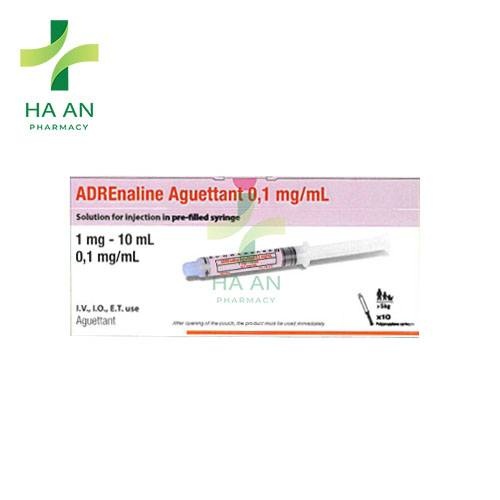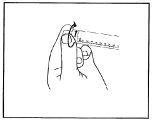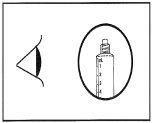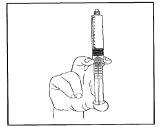

АДРЕНАЛИН АГУЭТТАН 0,1 мг/мл РАСТВОР ДЛЯ ИНЪЕКЦИЙ В ПРЕДНАПОЛНЕННОМ ШПРИЦЕ

Спросите врача о рецепте на АДРЕНАЛИН АГУЭТТАН 0,1 мг/мл РАСТВОР ДЛЯ ИНЪЕКЦИЙ В ПРЕДНАПОЛНЕННОМ ШПРИЦЕ

Инструкция по применению АДРЕНАЛИН АГУЭТТАН 0,1 мг/мл РАСТВОР ДЛЯ ИНЪЕКЦИЙ В ПРЕДНАПОЛНЕННОМ ШПРИЦЕ
Введение
Инструкция: информация для пациента
Адреналин Aguettant 0,1 мг/мл, раствор для инъекций в предварительно заполненном шприце
(Далее по тексту «Адреналин для инъекций»)
Эпинефрин
Прочитайте внимательно всю инструкцию перед началом использования этого препарата, поскольку она содержит важную информацию для вас.
- Сохраните эту инструкцию, поскольку вам может потребоваться прочитать ее снова.
- Если у вас есть какие-либо вопросы, проконсультируйтесь с вашим врачом, фармацевтом или медсестрой.
- Этот препарат назначен вам, и не давайте его другим людям, даже если у них такие же симптомы, как у вас, поскольку это может нанести им вред.
- Если вы испытываете побочные эффекты, проконсультируйтесь с вашим врачом, фармацевтом или медсестрой, даже если это побочные эффекты, которые не указаны в этой инструкции. См. раздел 4.
Содержание инструкции
- Что такое Адреналин для инъекций и для чего он используется
- Что вам нужно знать перед началом использования Адреналина для инъекций
- Как использовать Адреналин для инъекций
- Возможные побочные эффекты
- Хранение Адреналина для инъекций
- Содержание упаковки и дополнительная информация
1. Что такое Адреналин для инъекций и для чего он используется
Адреналин для инъекций относится к группе препаратов, называемых адренергическими и дофаминергическими агентами.
Этот препарат используется для:
- Лечения остановки сердца (внезапной потери сердечной функции, дыхания и сознания).
- Лечения острой анафилаксии у взрослых (тяжелого шока или коллапса, вызванного тяжелой аллергической реакцией).
2. Что вам нужно знать перед тем, как вам будут вводить Адреналин для инъекций
Вам не должны вводить Адреналин для инъекций
- если вы аллергичны (гиперчувствительны) к любому из компонентов этого препарата (указанных в разделе 6), когда имеется альтернативная презентация адреналина или альтернативный вазопрессор.
Предостережения и меры предосторожности
Адреналин для инъекций показан для экстренного лечения. Требуется постоянный медицинский контроль после введения.
Меры предосторожности
Риск побочных эффектов увеличивается, если у вас:
- есть медицинские показания гипертиреоза (заболевания щитовидной железы);
- есть тяжелая почечная недостаточность;
- вы испытываете гиперкальциемию (повышение уровня кальция в крови);
- вы испытываете гипокалиемию (понижение уровня калия в крови);
- у вас есть сахарный диабет;
- у вас есть сердечно-сосудистое заболевание или артериальная гипертония;
- у вас есть цереброваскулярные заболевания или атеросклероз;
- у вас есть глаукома (повышение давления в глазу);
- у вас есть заболевания предстательной железы;
- вы пожилой пациент;
- вы беременны.
Использование в спорте
Спортсменам сообщают, что этот препарат содержит адреналин, который может дать положительный результат при тестах на допинг
Использование Адреналина для инъекций с другими препаратами
Сообщите вашему врачу, если вы принимаете, недавно принимали или можете принимать любой другой препарат.
Препараты, которые могут взаимодействовать с Адреналином для инъекций, включают:
- галогенированные летучие анестетики (газ, используемый во время анестезии);
- определенные антидепрессанты;
- препараты для лечения артериальной гипертонии, сердечно-сосудистых заболеваний;
- препараты для лечения диабета.
Беременность и лактация
Если вы беременны или кормите грудью, считаете, что можете быть беременной или планируете стать беременной, проконсультируйтесь с вашим врачом или фармацевтом перед тем, как вам будут вводить этот препарат.
Вождение и использование машин
Получение Адреналина для инъекций не влияет на вашу способность водить транспорт или использовать машины.
Адреналин для инъекций содержит натрий
Этот препарат содержит 35,4 мг натрия (основного компонента поваренной соли) в каждом шприце. Это эквивалентно 1,77% от максимально допустимой суточной нормы потребления натрия для взрослого.
3. Как вводится Адреналин для инъекций
Адреналин для инъекций будет введен вам вашим врачом, медсестрой или санитаром. Они должны решить, какая доза правильна для вас, а также когда и как она должна быть введена.
В случае потенциально смертельных аллергических реакций (острой анафилаксии):
Взрослым будет введена доза 0,05 мг (0,5 мл раствора 1:10 000 адреналина) столько раз, сколько необходимо, пока не будет достигнут желаемый эффект.
В случае остановки сердца:
Взрослым:вводится 1 мг (10 мл раствора 1:10 000 адреналина) в вену или в кость каждые 3-5 минут до тех пор, пока сердце не начнет функционировать.
Детям с весом более 5 кг:вводятся 10 мкг/кг (0,1 мл/кг раствора 1:10 000 адреналина) в вену или в кость каждые 3-5 минут до тех пор, пока сердце не начнет функционировать.
Этот препарат не подходит для введения дозы меньше 0,5 мл и, следовательно, не должен быть использован у новорожденных или детей с весом тела менее 5 кг.
4. Возможные побочные эффекты
Как и все препараты, этот препарат может вызывать побочные эффекты, хотя не все люди испытывают их.
Были зарегистрированы следующие побочные эффекты:
- тревога;
- диспноэ (затруднение дыхания);
- нервозность;
- страх;
- потливость;
- пальпитация (нерегулярный или ускоренный сердечный ритм);
- тахикардия (повышенная частота сердечных сокращений);
- бледность;
- дрожь;
- слабость;
- головокружение;
- головная боль;
- тошнота;
- рвота;
- холод в конечностях;
- галлюцинации;
- обморок;
- гипергликемия (высокий уровень сахара в крови);
- гипокалиемия (понижение уровня калия в крови);
- метаболический ацидоз (повышение кислотности крови);
- мидриаз (расширение зрачка).
При высоких дозах или у пациентов, чувствительных к адреналину, побочные эффекты являются:
- аритмия сердца (нерегулярный сердечный ритм/остановка сердца);
- артериальная гипертония (с риском цереброваскулярного кровоизлияния);
- вазоконстрикция (сужение кровеносных сосудов, например, кожных, конечностей или почек);
- острая стенокардия;
- риск острого инфаркта миокарда.
Повторные местные инъекции могут вызвать некроз (повреждение тканей) в местах инъекции, в результате вазоконстрикции.
Во всех случаях необходим медицинский контроль после введения Адреналина для инъекций.
Сообщение о побочных эффектах
Если вы испытываете любой побочный эффект, проконсультируйтесь с вашим врачом, фармацевтом или медсестрой, даже если это возможные побочные эффекты, которые не указаны в этой инструкции. Вы также можете сообщить об этом напрямую через систему фармаковигиланса: www.notificaram.es. Сообщая о побочных эффектах, вы можете способствовать предоставлению более полной информации о безопасности этого препарата.
5. Хранение Адреналина для инъекций
Храните этот препарат вне поля зрения и досягаемости детей.
Не используйте этот препарат после истечения срока годности, указанного на этикетке. Срок годности - последний день месяца, указанного на этикетке. Ваш врач или медсестра проверят это.
Храните в алюминиевой упаковке, чтобы защитить от света и кислорода.
Не храните при температуре выше 25°C.
Не открывайте алюминиевую упаковку до использования.
После открытия упаковки продукт должен быть использован немедленно.
Не замораживайте.
Не используйте острые предметы для открытия упаковки.
Не используйте Адреналин для инъекций, если он был частично использован или показывает видимые признаки повреждения.
Препараты не должны выбрасываться в канализацию или мусор. Сдайте упаковку и препарат, который вам больше не нужен, в пункт сбора SIGRE в аптеке. Если у вас есть сомнения, спросите у вашего фармацевта, как избавиться от упаковки и препарата, который вам больше не нужен. Таким образом, вы поможете защитить окружающую среду.
6. Содержание упаковки и дополнительная информация
Состав Адреналина для инъекций
Активное вещество - эпинефрин (адреналин):
Каждый мл раствора для инъекций содержит 0,1 мг эпинефрина (адреналина) в виде адреналина-тартрата.
Каждый предварительно заполненный шприц объемом 10 мл содержит 1 мг эпинефрина (адреналина) в виде адреналина-тартрата.
Другие компоненты - хлорид натрия, соляная кислота, гидроксид натрия, вода для инъекций.
Внешний вид продукта и содержание упаковки
Адреналин для инъекций - прозрачный бесцветный раствор в предварительно заполненном шприце из полипропилена объемом 10 мл, упакованный в индивидуальный прозрачный блистер и завернутый в алюминиевую упаковку.
Предварительно заполненные шприцы поставляются в упаковках по 1 и 10 шприцев.
Возможно, не все размеры упаковок будут продаваться.
Владелец разрешения на продажу:
Laboratoire Aguettant
1, rue Alexander Fleming
69007 LYON
ФРАНЦИЯ
Производитель:
Laboratoire Aguettant
1, rue Alexander Fleming
69007 LYON
ФРАНЦИЯ
Laboratoire Aguettant
Lieu Dit Chantecaille
07340 Champagne
ФРАНЦИЯ
Местный представитель:
AGUETTANT IBERICA
C/ Baldini Reixac, 4-8, Torre I, 4º08028, Barcelona-Испания
Дата последнего пересмотра этой инструкции: июль 2024 г.
Подробная и актуальная информация о этом препарате доступна на сайте Агентства по лекарственным средствам и медицинским изделиям (AEMPS) http://www.aemps.gob.es/.
Эта информация предназначена только для медицинских специалистов:
Адреналин для внутривенного введения должен вводиться только теми, кто имеет опыт использования и регулирования дозы вазопрессоров в своей повседневной клинической практике.
Сердечно-легочная реанимация:
10 мл раствора 1:10 000 (1 мг) внутривенно или внутрикостно, повторяя каждые 3-5 минут до восстановления спонтанной циркуляции.
Эндотрахеальное использование должно использоваться только как последнее средство, если нет доступа к другой путям введения, в дозе 20-25 мл раствора 1:10 000 (2-2,5 мг).
При остановке сердца после хирургического вмешательства на сердце адреналин должен вводиться внутривенно в дозе 0,5 мл или 1 мл раствора 1:10 000 (50 или 100 мкг) с большой осторожностью и регулировкой дозы до достижения эффекта.
Острая анафилаксия:
Регулировать дозу с помощью внутривенных болюсов 0,5 мл раствора 1:10 000 (0,05 мг) в зависимости от ответа.
Адреналин 0,1 мг/мл (1:10 000) раствор для инъекций в предварительно заполненном шприце не рекомендуется для внутримышечного введения при острой анафилаксии. Для внутримышечного введения следует использовать раствор 1 мг/мл (1:1000).
Педиатрическое население:
Этот препарат не подходит для введения дозы меньше 0,5 мл и, следовательно, не должен быть использован внутривенно или внутрикостно у новорожденных или детей с весом тела менее 5 кг.
Остановка сердца у детей:
Внутривенно или внутрикостно (только для детей весом более 5 кг): 0,1 мл/кг раствора 1:10 000 (10 мкг/кг) до максимальной единовременной дозы 10 мл раствора 1:10 000 (1 мг), повторяя каждые 3-5 минут до восстановления спонтанной циркуляции.
Эндотрахеальное использование (в любом диапазоне веса) должно использоваться только как последнее средство, если нет доступа к другой путям введения, в дозе 1 мл/кг раствора 1:10 000 (100 мкг/кг) до максимальной единовременной дозы 25 мл раствора 1:10 000 (2,5 мг).
Следуйте строго следующему протоколу:
Предварительно заполненный шприц предназначен для одного пациента. Утилизируйте шприц после использования. Не повторно использовать.
Продукт должен быть визуально осмотрен на наличие частиц и изменений цвета перед введением. Должен использоваться только прозрачный, бесцветный раствор без частиц или осадка.
Продукт не должен использоваться, если алюминиевая упаковка или блистер были открыты или если защитный колпачок шприца (пластиковая оболочка на конце колпачка) поврежден.
- Откройте алюминиевую упаковку руками, используя только надрезы.
Не используйте острые предметы для открытия упаковки.
- Выньте предварительно заполненный шприц из стерильного блистера.
- Нажмите на поршень, чтобы освободить пробку. Процесс стерилизации может вызвать прилипание пробки к корпусу шприца.

- Отверните колпачок, чтобы разрушить защитный слой.Не трогайте открытый луер-соединение, чтобы избежать загрязнения.

- Проверьте, что защитный слой шприца полностью удален. В противном случае, снова наденьте колпачок и поверните его.
 Вытолкните воздух, осторожно нажав на поршень.
Вытолкните воздух, осторожно нажав на поршень.
- Подключите шприц к устройству для доступа к сосудам или к игле.
Нажмите на поршень, чтобы ввести необходимый объем.
Утилизация неиспользованного препарата и всех материалов, которые вступали в контакт с ним, будет осуществляться в соответствии с местными правилами.
- Страна регистрации
- Наличие в аптекахПроблемы с поставками
- Активное вещество
- Требуется рецептДа
- Производитель
- Информация носит справочный характер и не является медицинской рекомендацией. Перед приемом любых препаратов проконсультируйтесь с врачом. Oladoctor не несет ответственности за медицинские решения, принятые на основе этого контента.
- Аналоги АДРЕНАЛИН АГУЭТТАН 0,1 мг/мл РАСТВОР ДЛЯ ИНЪЕКЦИЙ В ПРЕДНАПОЛНЕННОМ ШПРИЦЕФорма выпуска: ИНЪЕКЦИОННЫЙ РАСТВОР, Адреналина основа 1 мг/млАктивное вещество: АдреналинПроизводитель: B Braun Medical S.A.Требуется рецептФорма выпуска: ИНЪЕКЦИОННЫЙ РАСТВОР, 1 мг/млАктивное вещество: АдреналинПроизводитель: Laboratorios Basi Industria Farmaceutica S.A.Требуется рецептФорма выпуска: ИНЪЕКЦИОННЫЙ РАСТВОР, 1 мг/млАктивное вещество: АдреналинПроизводитель: Bradex S.A.Требуется рецепт
Аналоги АДРЕНАЛИН АГУЭТТАН 0,1 мг/мл РАСТВОР ДЛЯ ИНЪЕКЦИЙ В ПРЕДНАПОЛНЕННОМ ШПРИЦЕ в других странах
Лучшие аналоги с тем же действующим веществом и терапевтическим эффектом.
Аналог АДРЕНАЛИН АГУЭТТАН 0,1 мг/мл РАСТВОР ДЛЯ ИНЪЕКЦИЙ В ПРЕДНАПОЛНЕННОМ ШПРИЦЕ в Польша
Аналог АДРЕНАЛИН АГУЭТТАН 0,1 мг/мл РАСТВОР ДЛЯ ИНЪЕКЦИЙ В ПРЕДНАПОЛНЕННОМ ШПРИЦЕ в Украина
Врачи онлайн по АДРЕНАЛИН АГУЭТТАН 0,1 мг/мл РАСТВОР ДЛЯ ИНЪЕКЦИЙ В ПРЕДНАПОЛНЕННОМ ШПРИЦЕ
Консультация по дозировке, побочным эффектам, взаимодействиям, противопоказаниям и продлению рецепта на АДРЕНАЛИН АГУЭТТАН 0,1 мг/мл РАСТВОР ДЛЯ ИНЪЕКЦИЙ В ПРЕДНАПОЛНЕННОМ ШПРИЦЕ – по решению врача и с учетом местных правил.










